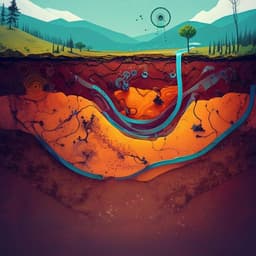
Earth Sciences
A data-driven approach to rapidly estimate recovery potential to go beyond building damage after disasters
S. Loos, D. Lallemant, et al.
In the wake of disasters, identifying areas at risk of prolonged non-recovery is critical. This innovative research conducted by Sabine Loos, David Lallemant, Feroz Khan, Jamie W. McCaughey, Robert Banick, Nama Budhathoki, and Jack W. Baker leverages data from the 2015 Nepal earthquake to shine a light on ongoing vulnerabilities that could impede recovery efforts. By focusing on social and environmental factors, this study could have transformed recovery strategies from the very beginning.
~3 min • Beginner • English
Related Publications
Explore these studies to deepen your understanding of the subject.







